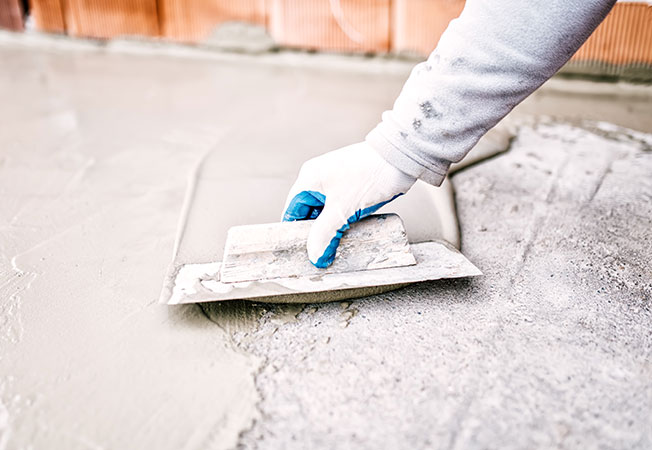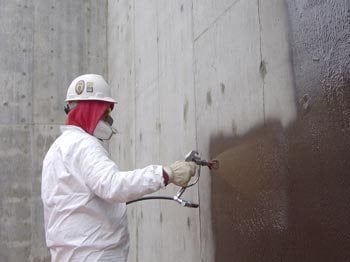What Makes Water Solutions Omaha a Top Choice for Homeowners
Wiki Article
Kinds of Waterproofing: Checking Out the Numerous Methods and Their Applications
Waterproofing is a crucial aspect of building and upkeep. It protects frameworks from the detrimental impacts of water damages. There are numerous methods offered, each with its one-of-a-kind applications and benefits. From membrane layer systems to cementitious solutions, comprehending these choices is essential for efficient application. The selection of waterproofing method can considerably influence resilience and long life. Discovering these various methods discloses their distinctive advantages and potential obstacles, motivating further consideration of optimal remedies.Membrane Layer Waterproofing Systems
Membrane waterproofing systems act as a vital obstacle versus water intrusion in various structures. These systems normally include slim sheets made from materials like rubber, polycarbonate, or bitumen, which are related to surface areas to avoid dampness infiltration. They can be set up over or listed below quality and are especially effective in areas susceptible to high water exposure, such as cellars, roofings, and foundations.The installation process includes cleaning the substrate, applying adhesives or guides, and precisely suitable the membrane layer to assure full insurance coverage. Membrane layer systems can be either totally stuck, mechanically attached, or laid loose, relying on the particular demands of the project. They use resilience and versatility, accommodating architectural movements without jeopardizing their waterproofing capacities. Additionally, these systems can be enhanced with additional layers for boosted defense. Eventually, membrane waterproofing systems are essential for protecting frameworks versus water damages and keeping long-lasting honesty.Liquid-Applied Waterproofing Coatings
Liquid-applied waterproofing coverings offer a flexible service for shielding surface areas from water infiltration - Drainage & waterproofing company Omaha. These finishes contain fluid materials that, when used, develop a smooth, versatile membrane layer. Their versatility allows for application on numerous substrates, including concrete, steel, and timber. The coverings can be used in diverse atmospheres, from household to industrial settings, making them suitable for roofing systems, structures, and below-grade structures.One substantial advantage of liquid-applied finishes is their capacity to adapt uneven shapes and permeate fractures, producing a robust obstacle versus dampness. They typically show excellent attachment homes and resistance to UV radiation, making certain longevity and durability. Furthermore, the application process is usually straightforward, enabling for fast installation and minimized labor costs. This technique additionally minimizes the risk of water pooling, as the constant layer properly directs water far from susceptible locations. Overall, liquid-applied waterproofing finishes are a reliable selection for complete water protectionCementitious Waterproofing Solutions

Cementitious waterproofing solutions provide a durable option for frameworks needing trustworthy dampness defense. These systems primarily use a waterproofing over bathroom tiles blend of concrete, sand, and chemical ingredients to develop a water resistant barrier. They are usually put on surface areas such as concrete wall surfaces, foundations, and floorings, offering a resilient, long-lasting defense versus water intrusion.One of the key benefits of cementitious waterproofing is its simplicity of application; it can be used using a brush, roller, or spray, making it ideal for numerous project sizes. In addition, this approach is suitable with several surface areas and can commonly be made use of combined with other waterproofing techniques.Cementitious services are especially reliable in settings where water direct exposure is a concern, such as basements or below-grade frameworks. Their outstanding adhesion residential or commercial properties ensure that they bond well with substratums, providing a strong and nonporous layer against moisture penetration.
Bentonite Waterproofing
Bentonite waterproofing is an extremely reliable technique that utilizes salt bentonite clay to develop a natural barrier versus water. This technique manipulates the unique residential or commercial properties of bentonite, which broadens upon contact with water, sealing any kind of prospective leaks and avoiding wetness infiltration. It is generally utilized in different applications, consisting of foundation wall surfaces, tunnels, and preserving walls, where water resistance is essential.Bentonite can be used in several forms, such as panels or blankets, offering convenience in installation. Its capacity to self-seal makes it an attractive option for areas subject to changing soil or ever-changing water levels. Furthermore, bentonite waterproofing is eco friendly, as it is a natural material that does not present unsafe chemicals right into the environments.Water Drainage and Exterior Waterproofing Systems
Reliable waterproofing frequently involves a combination of strategies, including water drainage and outside systems. Drainage systems, such as French drains and sump pumps, are created to redirect water far from frameworks, minimizing hydrostatic pressure against foundations. These systems are essential in avoiding water accumulation that can lead to structural damages and mold and mildew growth.External waterproofing, on the ardex waterproofing other hand, involves applying safety obstacles to the structure's outside. Techniques such as the setup of waterproof membrane layers, coatings, or sealers can help protect against water infiltration. This technique not only safeguards the foundation yet additionally boosts the overall resilience of the structure.Together, water drainage and external waterproofing systems click for more info form an extensive solution to handle water efficiently. By applying these methods, property proprietors can secure their investments versus the destructive effects of wetness, ensuring lasting security and safety for their structures.Often Asked Concerns
How Do I Select the Right Waterproofing Approach for My Task?
Selecting the appropriate waterproofing method depends on factors such as task type, environmental conditions, budget, and preferred long life. Examining these elements enables informed choices tailored to specific needs and demands.
Can Waterproofing Be Applied in Cold Weather Condition Issues?
Waterproofing can be applied in cold weather condition conditions, however it calls for specific materials and strategies. Cold temperature levels may influence curing times and adhesion, necessitating cautious choice of items made for low-temperature application.
What Are the Common Signs of Waterproofing Failing?
Common indications of waterproofing failing include noticeable water discolorations, peeling paint, wet smells, mold development, and cracks in walls or structures. Water Solutions Omaha. These indications suggest that moisture is penetrating the obstacle, endangering its efficiencyThe Length Of Time Does Waterproofing Last Prior To Requiring Maintenance?
The longevity of waterproofing differs, generally lasting between 5 to ten years. Elements such as worldly quality, environmental problems, and upkeep techniques affect its resilience, demanding regular examinations to ensure reliable protection against water breach.Are There Eco-Friendly Waterproofing Options Available?
The concern of environmentally friendly waterproofing options exposes an expanding passion in sustainable materials (Foundation waterproofing Omaha). Numerous all-natural materials, such as plant-based sealers and recycled products, use efficient remedies while reducing ecological impact, appealing to ecologically aware consumersReport this wiki page